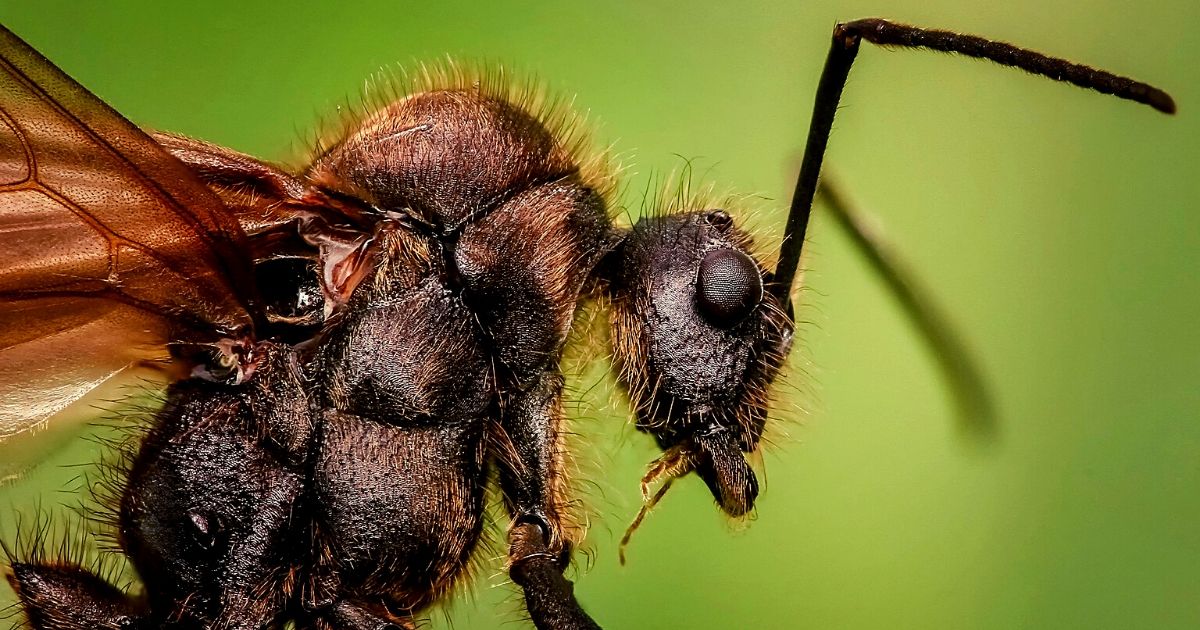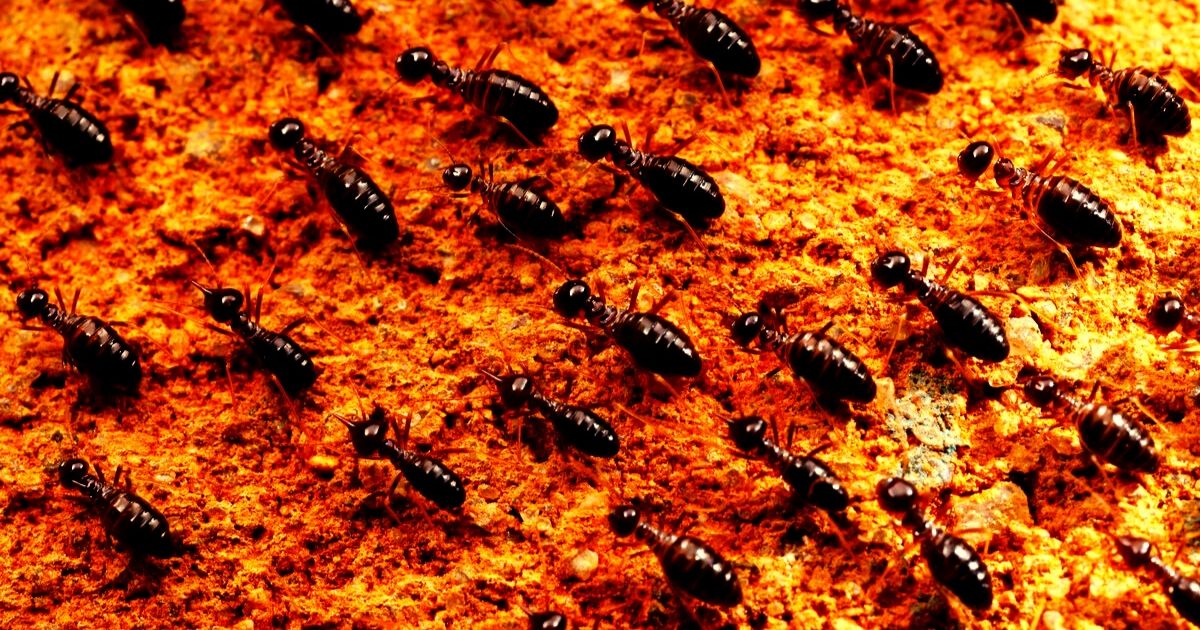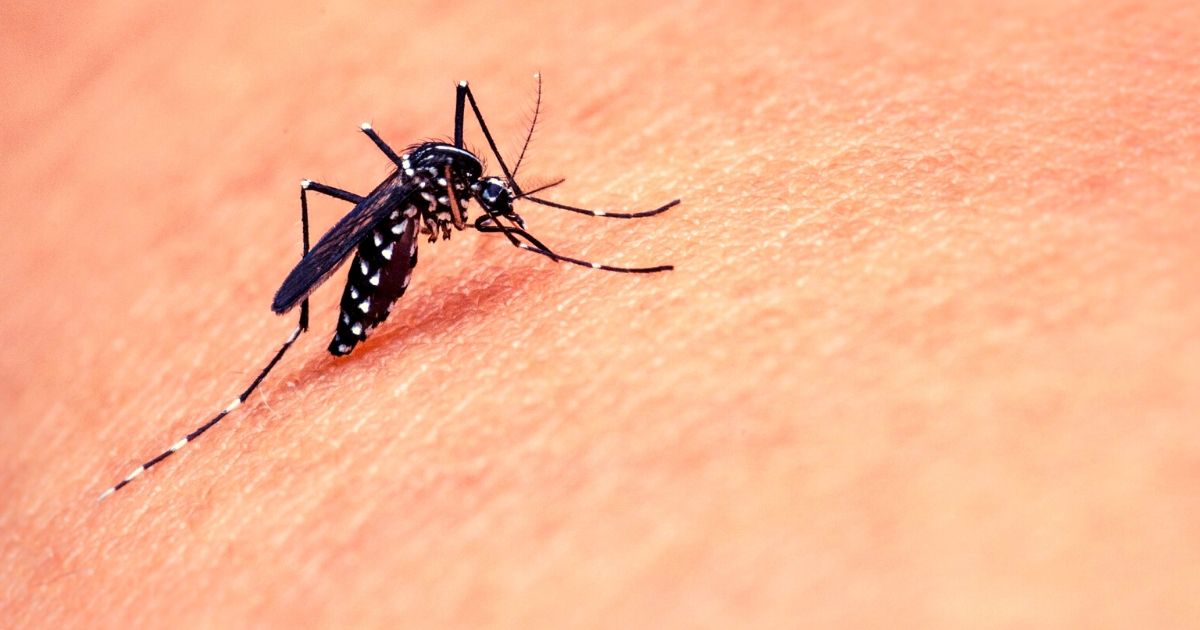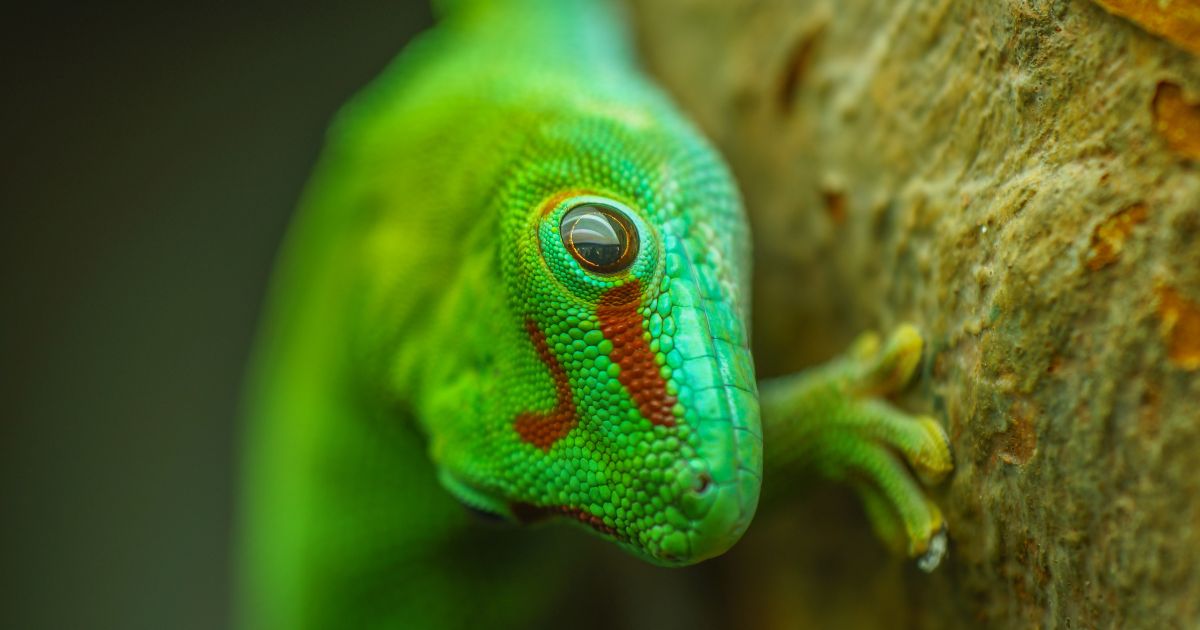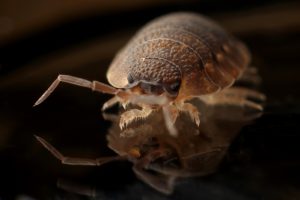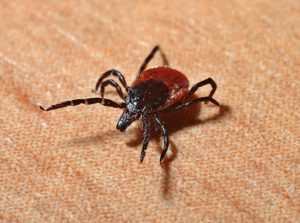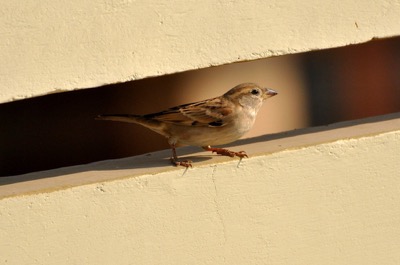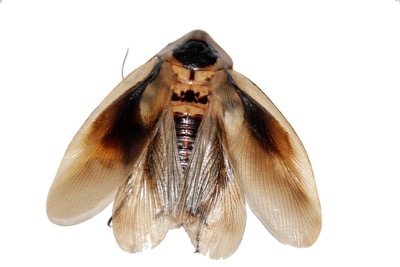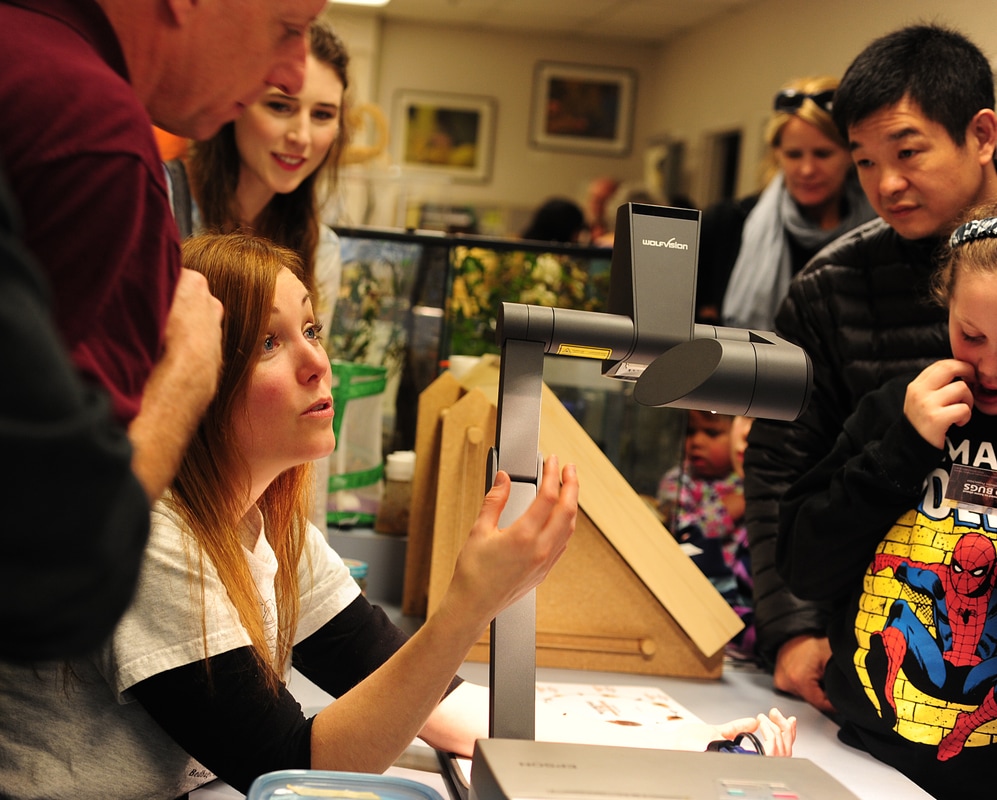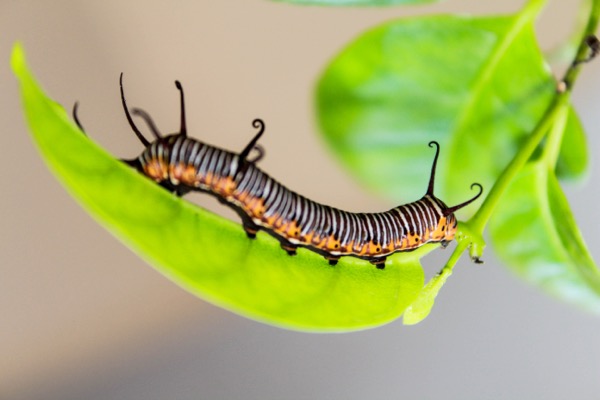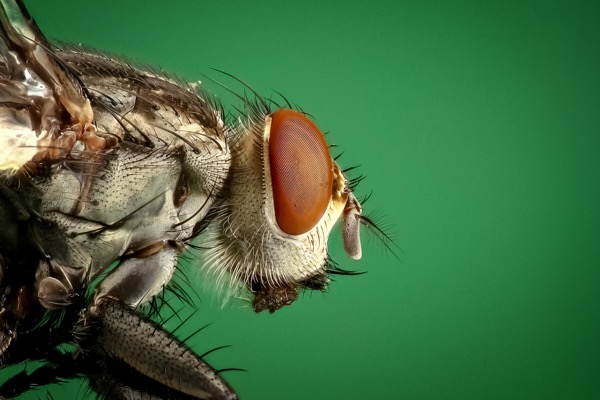Pest Management in the Pharmaceutical Industry
The pharmaceutical industry plays a significant role in defining human health, so they are subjected to strict governance and regulations. The presence of pests at any stage of the production process may cause severe economic losses. Besides the production areas, pests may contaminate the raw materials, storage areas, laboratories, packaging areas, and finished products.
The presence of pests in a pharmaceutical facility can cause severe consequences to the company, such as:
- Damage to brand and reputation
- Loss of trust from customers
- Financial loss for damaged products and batch recalls
- Revenue loss due to cessation of production
- Claims for compensation by customers and consumers
- Legal action by regulatory bodies and public health authorities
Common Pests in the Pharmaceutical Industry
The pests that may be present in and cause threats to a pharmaceutical facility include cockroaches, flies, rodents and stored product pests.
- Cockroaches and flies are mechanical vectors for various diseases. Their droppings and other excretory waste can contaminate and stain the facility. Other potential contaminants include body parts, shed skins and egg cases.
- Rats and mice also pose risks to the building, contaminate equipment as well as the products. Their gnawing behavior causes fire hazards as they chew through wire insulation, exposing the inner wire, which may lead to short circuit and fire.
- Stored product pests (beetles, weevils, moths and mites) depend on raw materials and herbs for food in pharmaceutical facilities. Infestation by stored product pests can be difficult to detect and they can contaminate the product if they enter the production process.
Want to find out about integrated pest management solutions?
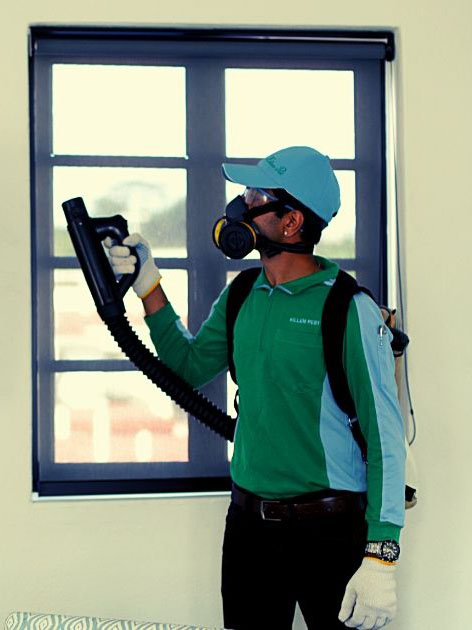
Modern Pest Management Program
Pest management today is no more a one-size-fits-all approach; it has become a uniquely designed program customized to fit the facility it is used in. The pharmaceutical industry is one of the most vulnerable sectors that rely on pest management companies to protect and maintain the high quality of their products. It differs from some other sectors, which are mainly concerned with the existence of mosquito breeding. The pest management program used in pharmaceutical facilities is known as IPM (Integrated Pest Management).
An IPM is tailor-made to different types of facilities and needs as there is no silver bullet to control pests. The IPM program aims to address the root of a pest problem and use pest management tools in practical plans. A pest management service provider should conduct a site survey and offer a suitable plan for a pharmaceutical facility.
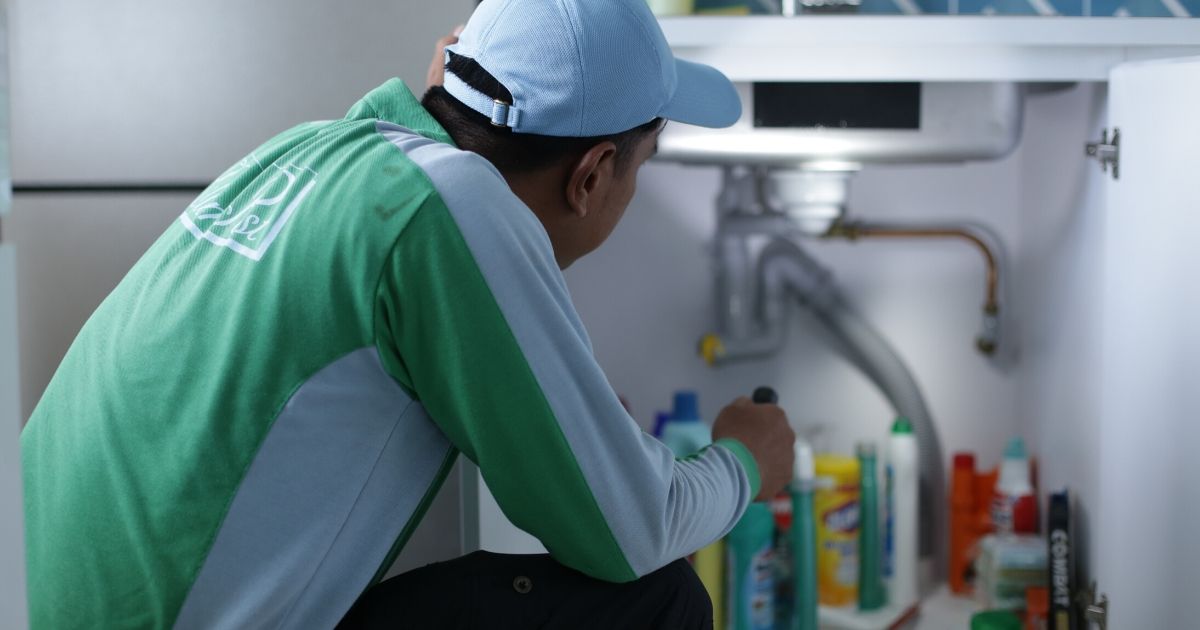
Traditional Pest Management VS Integrated Pest Management for the Pharmaceutical Industry
One significant difference between the two is that traditional pest management is often reactive rather than proactive. In a traditional pest management program, action is taken only when pests are sighted, whereas in an IPM program, monitoring plays an integral part. Through monitoring, pest activities and their trend can be detected so early actions can be taken to prevent pest infestations.
Many traditional pest management programs rely on regular treatments to control the population of pests. However, in an IPM program, monitoring is more important and treatments will only be carried out when the pest population exceeds the threshold. This avoids unnecessary use of pesticides, thus preventing contamination.
Pro Tip: The best way to prevent pests is to understand how pests gain access to your facility and take necessary actions to prevent the infestation.
Pest identification is an essential part of IPM. It allows you to target the correct species by knowing its biology, behavior, life cycle, and feeding habits. Knowing what pests you are dealing with allows you to be aware of the potential damage they can cause and determine the suitable control methods to be used. Pest identification also allows the source of infestation to be traced, whether it is introduced from the supply chain or is caused by a structural defect.
While the main focus of a traditional pest management program may be killing pests and reducing their numbers, an IPM program strives to prevent them from establishing infestations. Pests may enter a pharmaceutical facility through a leaking pipe, introduced from incoming shipments, or other sources that might be overlooked. An IPM program aims to identify these causes and resolve the problem, preventing future infestations.
Ways to Prevent Pests in Pharmaceutical Facilities
Besides pest management, pharmaceutical facilities should also take note of the other aspects:
- Exclusion
Keeping doors, shutters and windows closed to keep flies and birds out. Structural defects such as cracks and leaks should be fixed to prevent rodents and cockroaches. Pest proofing the building by filling up gaps and holes prevents pests from entering.
- Practice good housekeeping
Food, water and shelter are the basic needs of pests. Strategic placements of rubbish bins and good sanitation help to keep pests away.
- Practice proper storage methods
Avoid using cardboard to store items as they are ideal harborage sites of cockroaches. Proper arrangement of goods helps prevent rodent infestations.
- Utilize monitoring tools such as stations and traps
The advancement of technology allows monitoring to be done 24/7 via sensors and traps connected to the internet. This allows immediate actions to be taken once an activity is detected.

Pest Problem? Let Us Help.
We offer fast and effective precision treatments to eliminate pests while ensuring a safe environment for your home or business.
Choosing the Right Pest Management Vendor
When choosing a pest management service provider for a pharmaceutical facility, one may need to consider more criteria besides choosing a reputable company. With 27 years of experience in the pest management industry, Killem is supported by well-experienced pest management professionals. Nevertheless, we are always ready to embrace novel innovations to increase pest management programs’ effectiveness and efficiency.
Our quality assurance department provides technical support internally and for our clients while keeping our services under check. We take pride in making sure our clients are worry-free when it comes to pest-related issues and none of our clients have never failed any audits conducted both internally and externally.
Frequently Asked Questions
Pest control in the pharmaceutical industry means creating measures that minimise the risk of pests getting near the production, storage, packaging and other areas.
The presence of pests in a pharmaceutical facility can cause severe consequences to the company. Besides, all the facilities are subjected to strict governance and regulations.
Common pests in the pharmaceutical industry include cockroaches, flies, rats, mice, and stored product pests (beetles, weevils, moths and mites).
Fumigation Treatment: All You Need to Know
General

The never-ending battle between humans and pests has led to the rapid development of pest management services in Singapore, including fumigation treatments. The wide-ranging pests and their nature of behaviour can interfere with human activities.
The difficulties of controlling pests – due to the limitation on certain treatments’ application – has led us to using fumigation treatment to deal with severe pest issues.
Fumigation treatment in Singapore is usually carried out in the freight, shipping, storage and food manufacturing industries. All fumigators must apply for training and a licence from the NEA (National Environmental Agency). Beyond that, pest management companies are also responsible for the application of fumigation permits before they are allowed to carry out fumigation treatments in Singapore.
Fumigants in Singapore
Fumigation treatment is a unique form of action for pest management.
It is usually adopted by pest management companies and clients when there are no other feasible forms of control to the target pest. However, most fumigants such as hydrogen cyanide, methyl bromide and hydrogen phosphide are toxic to pests as well as humans. Nevertheless, fumigation treatment has effective killing effects and has become an inevitable pest management method in Singapore.
Mode of Action of Fumigation Treatment
Fumigation treatment is a process of release or dispersal of toxic chemicals onto the targeted pests. It can be very fast as the volatile nature of fumigants is able to pass through inaccessible spaces. It has almost no limit to penetrate any object as long as tiny pores are present on the surface of the treated object. In other words, the entire structure is secured with the fumigation treatment. The toxic chemicals enter the pest body mainly through its breathing system.
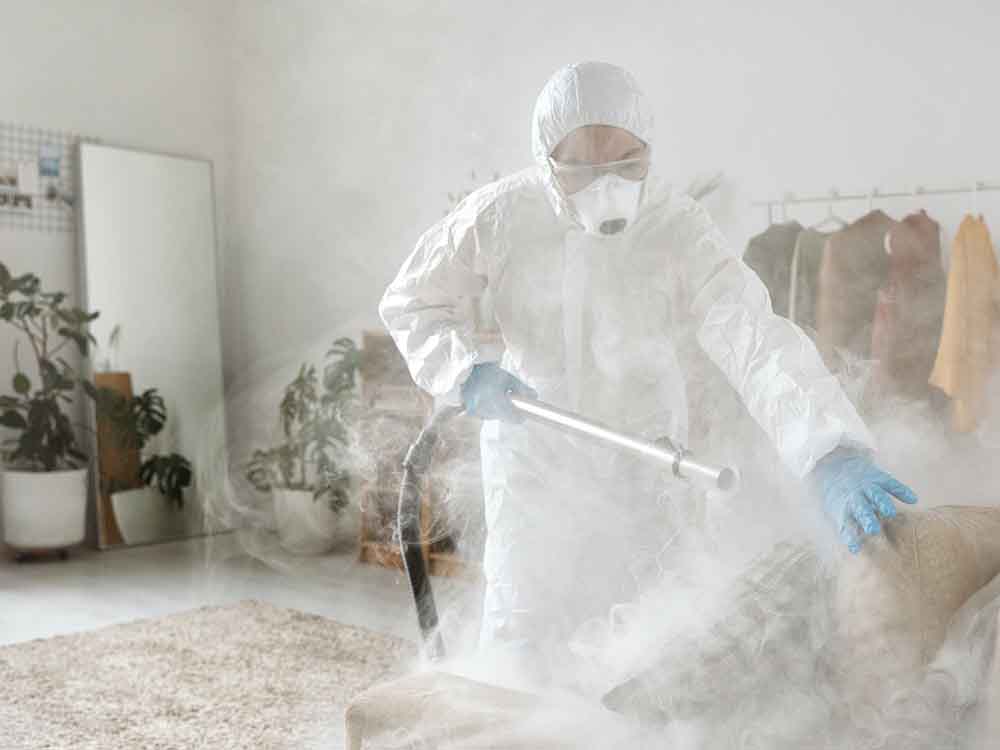
Target Pests in Fumigation Treatment
In general, fumigation treatment is helpful in dealing with all types of pests including stored product pests, wood borers, subterranean and drywood termites, bed bugs, cockroaches and even rats. It is often carried out in enclosed shipping containers, vessels and warehouses.
Fumigation on smaller structures such as infested wood and furniture is usually done for targeting drywood termites and wood borers. In this case, infested wood has to be removed and placed in an air-tight space to allow the proceeding of fumigation treatment.
Want to find out about pest maintenance programs in Singapore?
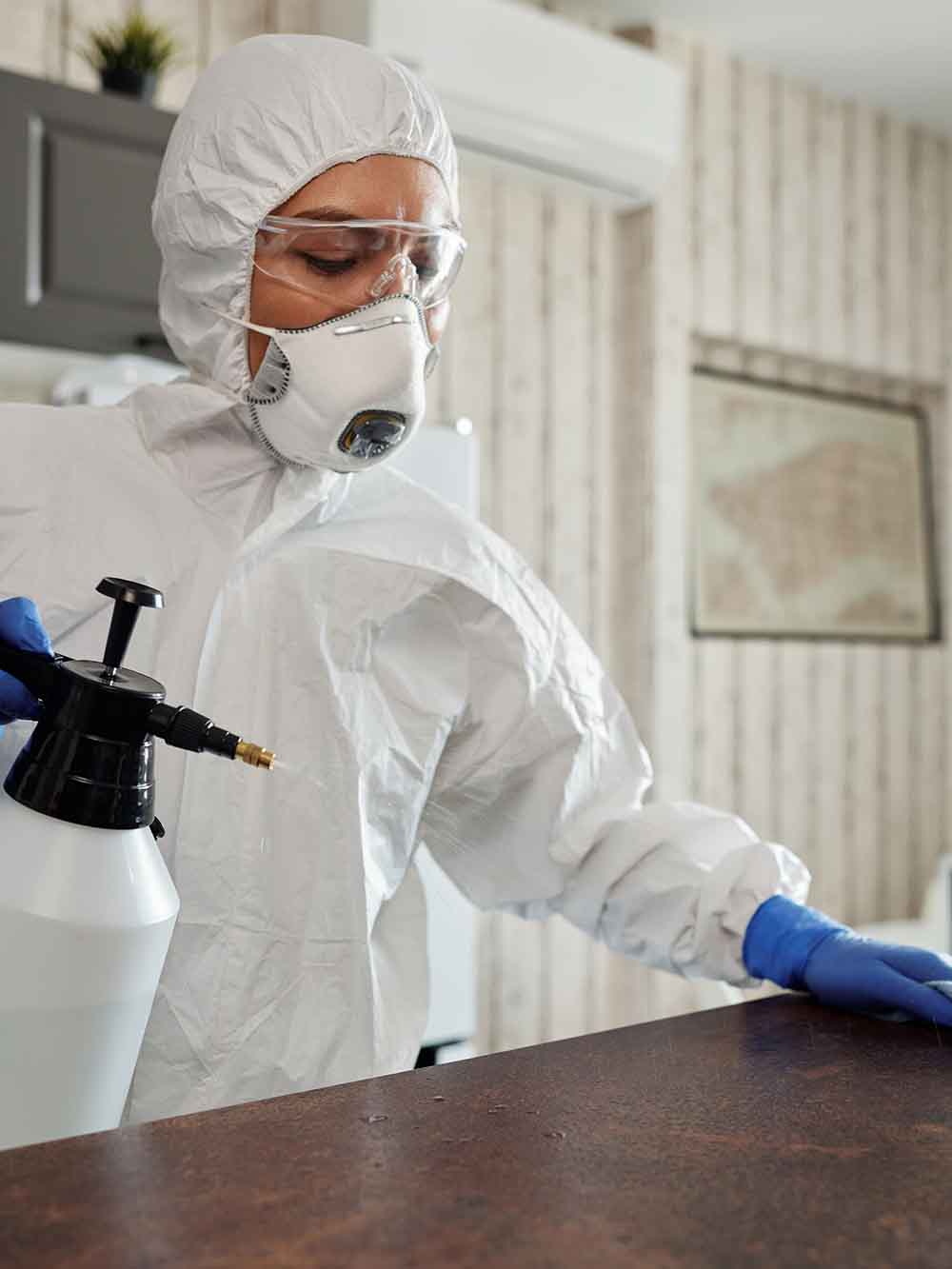
Disadvantages of Fumigation
One main disadvantage of using fumigation treatment is that there is no residual effect on the treated structure. Therefore, no residues remain in the treated spaces once the areas have been ventilated and cleaned properly. Hence, it does not help in protecting the treated structure from future pest infestations.
Since the knockdown effect of target pests depends on its respiration rate, low temperature of the treated environment may make the pest less susceptible. This is due to the fact that the lower the temperature of the surrounding, the lower the respiration rate of the pest.
Pro Tip: It's better to hire professional pest management services to ensure the fumigation treatment effectiveness.
Factors Contributing to Fumigation Failure
Fumigation failures are common. It can be due to the improper application and pest resistance. In addition, inappropriate choice of fumigants and loss of fumigant through leakage in treated spaces can also affect the effectiveness of the treatment. Hence, a leak detector is sometimes utilized before the treatment.
Final Note
Fumigation treatment, while seen to be effective because of its volatile and gaseous nature to target pests, can actually be harmful to human and pets. The excessive use and misuse of the fumigants not only pose harmful effects on human’s health but cause adverse effects on the treated commodity and property.
The use of it must be handled by trained and certified fumigators as they will have enough knowledge on its application and precaution steps before and after the treatment.

Pest Problem? Let Us Help.
We offer fast and effective precision treatments to eliminate pests while ensuring a safe environment for your home or business.
Careful planning and application must be adopted before the treatment is carried out. The appropriate choice and use of fumigants are vital as it may cause fumigation failures and hazards to the environment.
Frequently Asked Questions
Fumigation treatment is usually required in freight, shipping, storage and food manufacturing industries. Businesses in these industries must avoid the spread of pests and minimize the risk of damage to the goods or people’s health.
Fumigation treatment usually lasts for years, but it is recommended to have regular inspections to keep the areas protected.
It is important to remove plants and pets before fumigation, and also all the food and medicines that are open and/or are not sealed.
Related Posts
Predators as a Pest Control Method
General
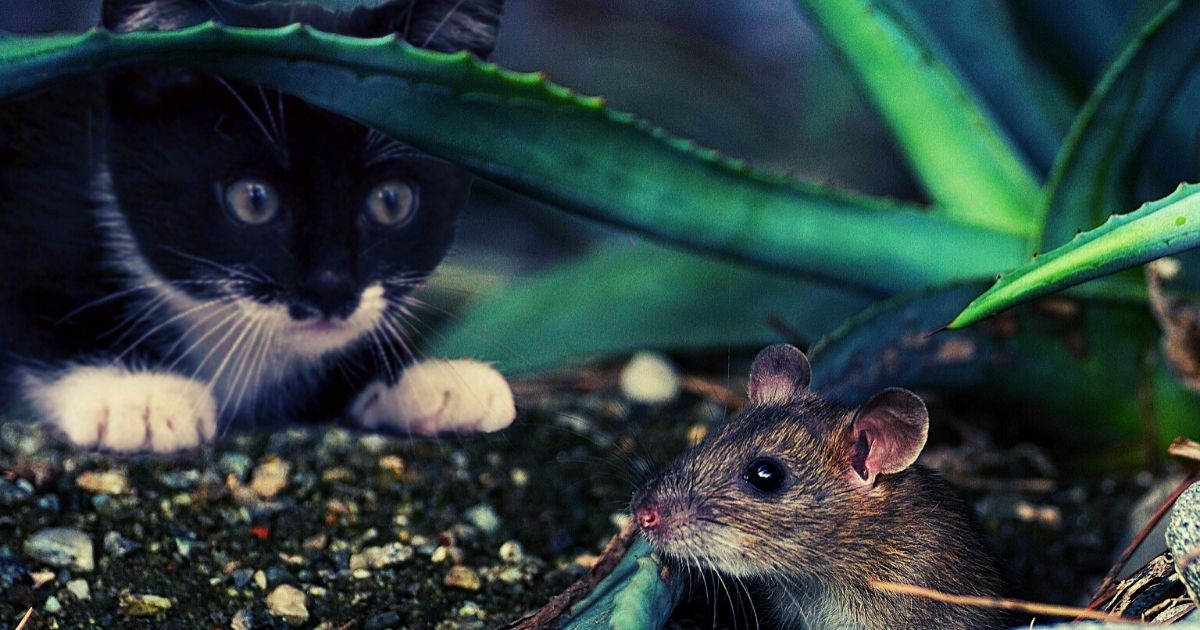
Pests can be difficult to deal with and sometimes people decide to fight fire with fire. Instead of relying on chemical repellents, humans have decided to return to a natural method: They introduce a predator into an environment in which it will eat pests.
Sometimes, this action works out great. In the majority of cases, however, the introduction of a foreign animal creates an invasive species.
These creatures are animals who have entered a new environment where they themselves lack natural predators or weaknesses to help keep their population in check.
Below are some of the best-known examples of this form of pest control as well as the outcome of each decision.
Predators: Pets for Pests
There is evidence that animals like cats have lived alongside humans for almost 10,000 years.
Cats are an excellent form of pest control because they eat nuisances like rats and mice. In medieval times, it was popular for cats to be used as mousers or to live in barns and granaries to stop pests from feasting on the local food supplies. During the Age of Discovery, felines were taken along on voyages and kept as ships to stop stowaway rodents from eating all of the supplies.
Pro Tip: Using predators for pest control has its own limitations and challenges, so if you have a large infestation it's better to consult pest management specialists.
Other domesticated rodent killers were dogs and weasels. Many breeds of canines were trained to hunt mice, rats, groundhogs, and other creatures that could dig up gardens and crops. This subset of dogs is frequently known as terriers, although they are not used as regularly in modern times. Weasels are an older form of pest control that dates back to Ancient Europe, Rome, and Greece. Weasels were trained and kept around households as another form of rodent removal.
Indian Runner Ducks
Ducks are found around the world but haven’t been used as a form of pest control until recently. In South Africa, some farms and vineyards have trained Indian Runner Ducks to parade from their rooms each morning and enter the fields. The ducks spend all day eating insects, snails, and slugs that grow on the vines. These bugs feed on the leaves of the plants as well as the edible crops, posing a considerable problem for farmers. The ducks stop these pests while allowing the crops to grow. Alongside the ducks are other trained waterfowl, including geese.
The Cane Toad
The saga of the cane toads is perhaps the most well-known example of a predator used to fight pests. In the early 20th century, Australia was known for its sugar production and many farmers and scientists wanted to combat cane beetles, which were destroying crops. The Bureau of Sugar Experiment Stations brought over cane toads from Hawaii and released over 100 of them in the wild. The toads reproduced rapidly and now number over 200 million across the continent.
Unfortunately, the toads were not interested in the beetles and started to eat other native species instead. Because the cane toad naturally produces a toxin to defend against enemies, it has also started to kill other animals who try to ingest it. The situation with the cane toads constitutes an ecological emergency.

Pest Problem? Let Us Help.
We offer fast and effective precision treatments to eliminate pests while ensuring a safe environment for your home or business.
Today, scientists have tried to come up with new pest control methods to control invasive species. Some want to release sterile males into the environment to compete for resources, while others want to use a gene to change the females so they only produce males, limiting the population. Another method is releasing a virus that the toads are susceptible to, but this can harm native species.
This failed example of predators as pest control demonstrates some of the drawbacks of this method.
Frequently Asked Questions
Predators are one of the natural enemies of pests. So, as a way of biological control, predators can be introduced to limit and control pests.
The main predator groups include spiders, predatory bugs, predatory mites, lacewings, beetles, and hoverflies.
Predators attack different pest species and can effectively help to control insect pests.
Related Posts
The Largest Pest Control Lawsuits
General

No industry would be complete without legal repercussions. In pest control, lawsuits come in different varieties. Pest management companies can be sued for using the wrong pesticides and chemicals. Hotels, motels, and hostels can face reputation issues if they fail to keep a pest-free environment. Considering the potential issues insects, rodents, and other nuisance animals can create, it should be no surprise that the associated lawsuits can result in payouts in the millions.
Termite Termination
The United States features a thriving pest control industry worth billions of dollars each year. One of the largest pest management companies is Orkin, which specializes in residential exterminations. Recently, one of its employees by the name of Robert Still filed a whistleblower lawsuit. A whistleblower case is when a company insider brings to light ethical and legal problems within the business with evidence of obvious wrongdoing.
He accused Orkin of forcing employees to disregard pest management safety protocol and spray termite pesticides on wet ground. In the United States, it is against federal, state, and local law to do so because of the potential danger and how it weakens the chemicals. After working for 19 years with the company, he reported the issue to his supervisor. The supervisor told him to ignore the violation. Shortly afterwards, he was suspended from his job and then fired.
Still discovered that unlicensed employees were being asked to perform similar dangerous violations. He exposed his former employers after his termination for all of these actions. What resulted was the largest whistleblower verdict in the state of New Jersey. The jury awarded Stills $5 million and Orkin faced penalties for its mismanagement of resources and endangerment.
The Bugs Bite Back
Bed bugs are considered the most numerous pest in the world and have seen a rise in population over the last decade. With their increasing numbers, more and more businesses have found it difficult to curb their presence in hotels and areas to rest.
In the United States and many other nations, it’s considered negligent for people in the hospitality industry to subject their customers to bed bugs. People who have been bitten while staying the night have been able to bring lawsuits against the companies for damages and emotional distress from the bites. It has gotten to the point where many lawyers and law firms specialize in bed bug cases. As of 2018, businesses have been forced to pay over $2 million to customers who were bugged by bed bugs.

Pest Problem? Let Us Help.
We offer fast and effective precision treatments to eliminate pests while ensuring a safe environment for your home or business.
Beware of the Geese
Geese are terrifying. Geese during mating season are even worse. Perhaps the strangest type of pest control lawsuit occurs when these waterfowl come into town and start building their nests.
One of the most aggressive birds is the Canadian Goose, which travels and lives throughout North America. In many locations throughout Canada and the United States, properties can be and are frequently sued for failing to manage aggressive nesting geese. When they think their nests and goslings are being threatened, geese attack. Most of these attacks don’t result in injuries, but the ones that do can be serious. Many companies and properties have been forced to pay millions of dollars as compensation.
Related Posts
The History of Pest Control
General
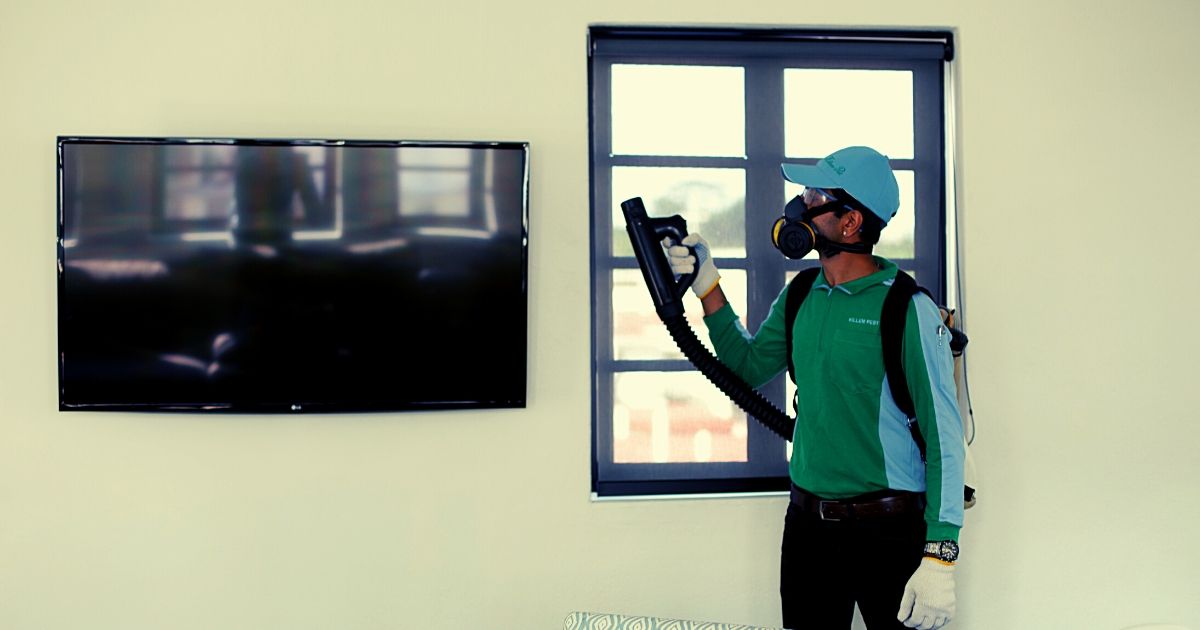
As long as humans have been around, so have the pests that plague them. A history of how humans have battled pests throughout the years.
Pest Control in the BC Years
People have been developing methods to keep pests away from themselves and significant food sources since at least 2500 BC, when the first documented instances of pest management have been found.
In ancient Sumer, doctors developed methods of treating insect bites such as the application of sulfur to soothe irritation. Other cultures like the Greeks and Romans mandated certain times of the year when members of the population were required to go out and capture and kill as many locusts as possible to defend crops.
Pest control has also been around as long as agriculture. For many ancient farmers during the BC era, this could be as simple as planting extra seeds to try to accommodate for the amount of food that menaces as birds, beetles, and locusts would eat during any given year. By 1500 BC, they had learned to time the planting of crops to avoid pest reproductive cycles. In 300 BC, records were found of Chinese farmers who had noted when pests were likely to appear and had also adjusted their planting cycles. There are also findings that Egyptians and Chinese were using herbs & oils for pest control.
Pest Control Before the 20th Century
While a lot of knowledge was lost during the early AD years, humans managed to build upon old pest control methods to develop increasingly intricate methods.
The Chinese introduced mites into ecosystems to handle more damaging pests; this action is one of the first written instances of humans using a predator to handle nuisance creatures. Tobacco infusions with nicotine, herbs and arsenic were also cited in the history of pest control. Asian farmers additionally learned by 400 AD that if they applied arsenic around the base and roots of their crops in rice paddies, they could prevent infestations that would damage the supply of the main staple food in the area.
When Asia entered the Middle Ages (476-1450 AD), people had learned that they could apply natural concoctions like lemon oil and wormwood to their skin to stop mosquitoes and mites from biting them.
Want to find out more about pest removal in Singapore?
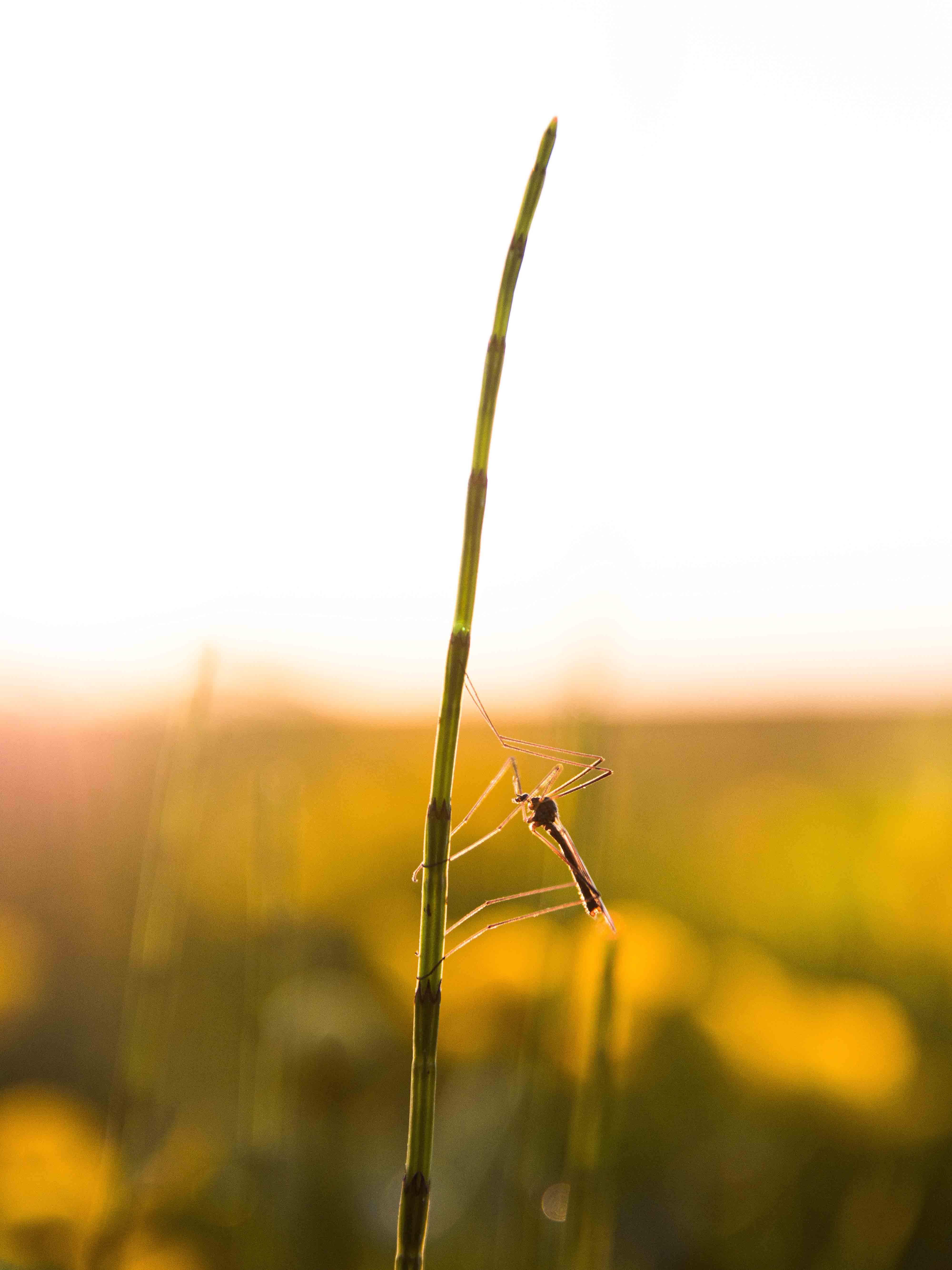
Europe did not fare as well as other regions when it came to pest management. It wasn’t until the Renaissance (1300-1700 AD) that efficient pest control methods developed. One of the main reasons for this failure to create treatments was Christianity.
Many Europeans believed that pests and disease were a punishment sent from God and therefore refused to find ways to handle nuisances. After the Black Plague decimated 25% of the population during the 14th century, people began to kill rodents in an attempt to stop the spread of disease. By the 1800s, humans were using copper and nicotine on their crops and around their homes to kill pests.
Pesticides and Integrated Pest Management
The 19th and 20th centuries were the time of the pesticide.
Humans began to realize that the use of chemicals was one of the most effective ways to stop pests from eating crops and spreading disease. Inorganic compounds became the popular choice for farmers and gardeners, and the span of the 1940s and 1950s became known as the “pesticide era” because of the plentiful number of products available. The number of pesticides increased by a factor of 50, and scientists began to bring them to developing countries to try solve pest problems like locusts and mosquitoes.
Many of these products contained DDT, a tasteless, colorless, and odorless chlorine-based pesticide. This product had been used extensively during WWII and trips to other nations to kill disease-carrying mosquitoes and continued to be people’s first choice against pests.
The World Health Organization additionally used DDT to curb malaria around the world, targeting areas in Asia where it was rampant.
Unfortunately, it was soon discovered in the 1960s that DDT was highly toxic and caused numerous ecological problems, including birth defects, the sterility of animals, and death. Many countries around the world started to ban its use, including Singapore in 1984.
In 1962, Rachel Carson’s “Silent Spring” highlighted the dangers of pesticides, triggering public concern about their safety and impact on wildlife, water, and human health. This led to policy changes in the 1970s and a push for Integrated Pest Management (IPM).
Following the age of pesticides came the era of Integrated Pest Management (IPM). This practice combined numerous approaches to pest control to stop infestations before they started and to develop healthy living environments. IPM encourages people to maintain clean buildings and seal away food and other resources that can attract pests. It advocates the use of pesticides and other harsh measures only as needed and focuses on controlling pest populations so humans no longer have to worry about the negative effects of pesticides and their toxic compounds.
The history of pest control is a dynamic narrative, and pest management continues to evolve in response to changing perspectives on sustainable agriculture. As communities start to focus more on environmental and health impacts of traditional pesticides, there is a growing trend on adopting more eco-friendly approaches to pest management.

Pest Problem? Let Us Help.
We offer fast and effective precision treatments to eliminate pests while ensuring a safe environment for your home or business.
Frequently Asked Questions
The first documented instances of pest control date back to 2500 BC, long after the beginning of agriculture.
With the rise of agriculture, people started to realize the danger that pests pose to their harvest, and started to explore ways to get rid of them.
For several years Singapore has been at constant war with pests. Without pest control services, people would be exposed to health risks and diseases, and their food and habitats would suffer from pest infestation
Related Posts
DIY Pest Control Methods
General

Do-it-yourself or DIY pest control is becoming more popular.
Pest control is the processing of managing nuisance bugs and animals that can spread disease, damage food, and overall be irritating for life. Sometimes people don’t want to contact a professional company for a minor problem. At other times, property owners might be interested in saving money by taking care of issues themselves.
Whatever the reason might be, DIY pest control is rapidly becoming safer and easier for regular people.
Before using any method, it’s important to assess all of the potential risks involved in any treatment. Individuals should educate themselves about the chemicals used in products they purchase and any hazards associated with traps. People should remember to read all of the ingredients and follow directions precisely.
DIY pest control can be an easy process once the property owners who would like to try it research and know what they’re doing. Additionally, not all of the methods are dangerous. Some are common things that everyone can do to ensure they live in a pest-free environment.
Below are some of the simplest and most efficient DIY pest control treatments.
Clean Up!
One of the easiest DIY pest control methods is to keep a property clean.
The majority of insects and rodents are attracted to homes and businesses because they provide valuable resources.
Sealing food containers, cleaning up spills, and closing any cracks in the walls or around doors and windows can help keep pests out.
Want to find out more about pest removal in Singapore?
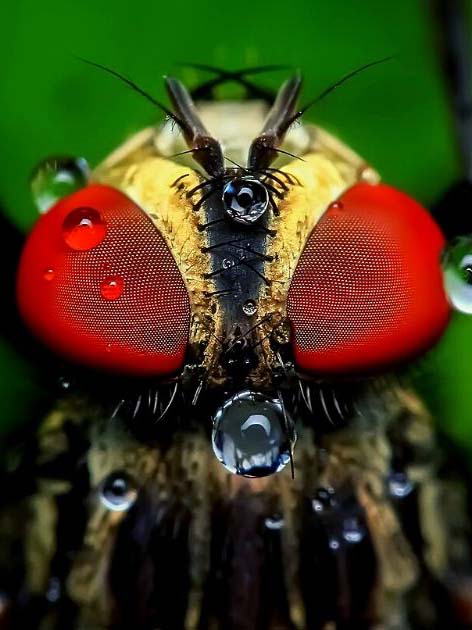
Cleanliness is a significant part of Integrated Pest Management (IPM), a method in the pest control industry which relies on a variety of factors to keep nuisance creatures in check. Before concoctions like pesticides or devices like traps are needed, pest management professionals will strive to develop plans to prevent infestations. One of the most significant steps is keeping an area clean and limiting a pest’s access to resources.
Improve Ventilation
Many pests like ants, rodents, and cockroaches are attracted to damp environments. They flock to basements, kitchens which are not properly cared for, bathrooms, and other locations.
Pro Tip: One way property owners can stop an infestation before it begins is to ensure every area in a building is properly ventilated.
Some methods of doing so are to open windows with screens and allow natural air inside, use dehumidifiers, and improve the structure’s overall ventilation system. Hard to reach areas such as basements should regularly have their humidity levels checked and people should never leave standing water inside of a property for long. This includes areas in and around sinks and bathrooms.
Traps and Sprays
The most ubiquitous form of DIY pest control is the use of pesticides and mechanical traps.
Increased research into the inherent risks of the chemicals used in pesticides has allowed scientists to engineer versions which are safer for at-home use. Many can be purchased at general and hardware stores. They contain ingredients like pyrethrins and permethrin, which kill pests like bed bugs, mosquitoes, and ants. It’s important to remember that these materials are also hazardous to humans and pets and should be sprayed away from other living creatures.
Traps can also be bought and come in many varieties. Rodent traps are the most well-known and include the traditional plastic and wooden varieties with a snapping metal wire that people are used to. Some other options include humane boxes which will lock a rat or mouse inside, so it can be released later.
Finally, there are glue traps. Glue traps used against rodents are considered inhumane, but people can also recognize them as fly paper. Both traps and pesticides can be used to great effect without requiring a property owner to call a professional pest control company.
How do you make bug spray at home?
Homemade bug spray can help repel insects like mosquitoes, flies, ticks, gnats, ants, fleas, moths, cockroaches, and spiders. You can make a simple homemade bug spray using natural ingredients. Here’s a basic recipe for a homemade bug repellent spray using essential oils:
- 1 cup of distilled water
- 10-20 drops of essential oil (e.g., citronella, lavender, eucalyptus, lemon, or peppermint)
- A spray bottle
Select essential oils known for their insect-repellent properties. Add 10-20 drops of your chosen essential oil(s) to the distilled water. Stir the mixture thoroughly to ensure that the essential oils are well blended with the water and pour the mixture into a clean spray bottle. Before using the spray, give it a gentle shake to mix the ingredients. Spray the homemade bug repellent onto your skin, clothing, and areas where bugs are a problem.
What DIY pest traps can be used at home?
There are some homemade traps that you can use for basic pest control around your home, here are a few examples:
- Fruit Fly Trap: Fill a small container with apple cider vinegar and add a drop of dish soap. Cover the container with plastic wrap and poke small holes in it. Fruit flies will be attracted to the vinegar, and the soap will make them unable to escape.
- Roach Trap: Place a mixture of boric acid and powdered sugar in a shallow container. Roaches are attracted to the sugar and will ingest the boric acid, which is toxic to them.
- Mouse Trap: Use a tall bucket or bin. Place a ramp leading up to the top, where you’ll attach a small piece of cardboard with bait (like peanut butter) on it. The mice will climb up the ramp and fall into the bucket, unable to climb out.
Keep in mind that these methods might not be as effective as professional treatments for severe infestations. Always prioritize safety and consider consulting with experts if you have persistent pest problems.

Pest Problem? Let Us Help.
We offer fast and effective precision treatments to eliminate pests while ensuring a safe environment for your home or business.
Frequently Asked Questions
DIY pest control is generally only effective for small pest problems, so if you have a more serious pest infestation, it’s better to hire professional pest control services.
DIY pest control is an affordable option for dealing with small pest infestation, and you can also take measures to prevent pests in the first place.
The average cost of DIY pest control ranges from $50 to $250, depending on the problem you’re dealing with and the pest control products that you are using.
Related Posts
Famous Buildings With Pest Control Problems
General

Not even famous places are safe from pests. Sometimes creatures typically considered a nuisance are invited into the space. More often than not, though, pests invite themselves. Recent developments in environments across the globe make the areas where famous buildings are located more attractive to pests by providing resources and shelter.
Climate change is a large culprit because some regions have become warmer and more humid, providing ideal conditions for invasive insects.
Below are some of the most famous buildings around the world and their struggles with pests.
Rat Worship
The prospect of 25,000 rats in a building is not an appetizing concept to many people, but that is the situation with the Karni Mata Temple in India. The temple was inspired by the story of Karni Mata, a man who was resurrected as a rat after drowning in a pool of water. People come from all across the country to feed and interact with the rats.
The few white rats who live on the property are considered exceptionally holy and lucky, and encountering one is thought to be a blessing.
The Karni Mata Temple is located in Deshnoke and hasn’t seen a decline in visitors since its creation, even during disease outbreaks. Indeed, many people visit the location to be healed of their ailments. The primary inhabitants are black rats, which are common throughout the world. These rodents are not to be harmed by visitors or locals, and are given everything they need to survive and thrive in their environment.
Want to find out about pest removal in Singapore?
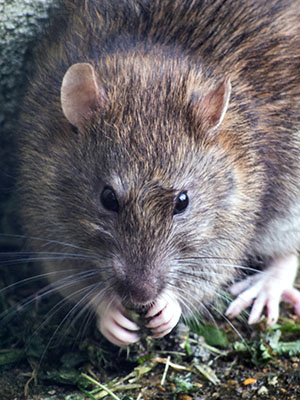
Tourist Traps
Unlike the Karni Mata Temple, there are many famous buildings where rats aren’t invited guests. The White House in the United States and the Eiffel Tower in France are two popular tourist destinations, significant cultural monuments, and two areas plagued by infestations of rats.
The White House is the presidential home for the U.S. and has recently filed hundreds of pest control requests to deal with a growing population of insects and rodents which have found their way into the stately manor.
Rats have been sighted in the kitchen, outside of politicians’ and officials’ offices, and even in the infamous Situation Room.
Meanwhile, the Eiffel Tower has been forced to close several times over the last two years as the city of Paris struggles to manage a growing rodent threat. Paris is a massive city which has struggled with rats for many centuries. Due to the large population and the number of tourists who visit each year, the environment features all of the conditions rats need to thrive.
The Eiffel Tower is a popular destination for rodents because people leave behind food and drinks while the buildings and sewer system in the surrounding area provide adequate shelter. The government has increased the number of pest management services available, but results have been limited.
Pro Fact: As global warming continues to develop, certain species are able to thrive in some regions.
Climate Change for Termites
Scientists have noticed the effects of climate change for several decades, including its effects on local pest populations.
As certain regions across the globe develop warmer, more humid climates, certain species are able to thrive.
In Korea, a shift in the standard temperature and humidity has resulted in the spread of termites. Termites only lived in a few areas of the peninsula, but they have now spread to almost every location. These pests create problems for numerous buildings, including ancient Korean temples constructed of wood.
Professionals discovered termite populations in several significant cultural locations like the Gyeongju Hyanggo. This temple is listed as one of South Korea’s cultural heritage sites and faces severe consequences if termite populations continue to grow.
Because many of the old temples are constructed entirely out of wood, termites can weaken the structure and possibly cause collapse. Pest control operatives trained dogs to recognize insect hormones and have been using them to regularly check the region for termites and other wood-dwelling insects. The Cultural Heritage Administration of Korea recognizes the termite problem and has dedicated increased time and resources to trying to preserve temples.

Bird Woes at Tourist Hotspots
Famous landmarks around the world suffer from unexpected challenges: pest problems associated with birds. Pigeons, seagulls, and other feathered inhabitants find refuge in the architectural wonders, leading to both aesthetic and structural concerns.
Taj Mahal is just one example. Pigeons are using its marble façade as a nesting site, which leads to gradual degradation of the marble’s surface. This highlighted the importance of pest control measures to preserve the historical monument.
Similarly, the Sydney Opera House in Australia has struggled with seagulls and other birds that perch and nest within the structure’s iconic curves. Bird droppings affect the visual appeal of the Opera House and make it look messy. To deal with this, the people in charge of the building have tried different things to stop birds from living there. They put up things to keep birds away and even used nets.
Despite being an iconic skyscraper, the Empire State Building has faced its share of pest control challenges, including issues with pigeons and rodents due to its urban location and food sources in the vicinity. To tackle this, the people in charge of the Empire State Building have been working with pest experts to figure out how to keep these unwanted visitors away. They’ve been sealing off places where pests might get in and using techniques to scare them off.
Art Against Uninvited Guests
Maintaining a museum as vast as the Louvre can be challenging, and pest control is one aspect of maintenance. The museum has dealt with issues such as rats and insects damaging artwork and the building itself.
Rats, cockroaches and ants, drawn by the proximity to urban sources of food, have posed a problem for the Louvre. Rats chewing on the wood and making homes in tight spots could hurt the building. While bugs like cockroaches and ants could damage the valuable art, either by direct contact or indirect damage.
To prevent damage, the museum regularly checks for signs of pests and sets traps to catch them. The museum also makes sure that places where pests could get in are closed off. By working with experts and being careful with chemicals, the Louvre takes important steps to protect its valuable collection and the building itself from unwanted visitors.

Pest Problem? Let Us Help.
We offer fast and effective precision treatments to eliminate pests while ensuring a safe environment for your home or business.
Related Posts
Industry Inside: Pest Control for Offices & Commercial Buildings
General

You always want to make sure that your business is putting its best foot forward when it comes to the services you offer or the products you make.
You want employees to be in a safe and clean environment, and you want any clients or customers that come to the property to be impressed with what you offer, rather than disgusted by the fact that you have a pest infestation.
Recently, in the Singapore media there have been a number of cases of rodents running around shopping malls and rodent burrows found outside of commercial buildings. Such incidences can ruin reputations and bring about business downfalls.
Why Is Pest Control Important in Offices and Commercial Buildings?
You need to maintain a clean environment for your workspace. Having pests looks bad to your customers and clients, and you can be sure that your employees will not want to work in a location that is overrun with pests. It is unhealthy, and it has the potential to be dangerous.
Whether it is flies, roaches, rats, or other types of pests, you need to take steps to have the problem handled as quickly and efficiently as you can.
Pro Tip: Whether it is flies, roaches, rats, or other types of pests, you need to take steps to have the problem handled as quickly and efficiently as you can.
If you don’t take pest control measures in time, it can take a serious toll on your business.
By law, all government buildings in Singapore need to have regular pest control. This should also be practised in all offices and commercial spaces. Proper pest control, and help from professionals when needed, can ensure you have a clean and pest free environment.
Pests Control Tips for Commercial Buildings
Implementing effective pest control measures is crucial. Here are some practical tips to help you deal with pests in your commercial building:
- Conduct routine inspections to identify their hiding spaces. Watch out for signs of pest activity, entry points, and potential breeding areas.
- Clean common spaces, including kitchens, restrooms, to eliminate potential food sources for pests.
- Dispose of trash regularly, and keep waste areas clean
- Store food items in airtight sealed containers and clean up spills
- Eliminate clutter to reduce hiding areas for unwanted pests
- Train staff about pest prevention measures, including proper waste disposal and reporting any signs of infestations
- Have regular inspections from pest control professionals that specialize in commercial spaces. These experts have necessary equipment to identify pests hiding areas, safely eliminate them and prevent any future infestations.
What is Good Housekeeping?
Even though you might not realise it, there are plenty of reasons for pests to want to come into your office building. Sometimes, the employees might leave snacks on their desk that can draw the pests. There could be items in the pantry, the garbage cans, and other areas that will do the same. Proper housekeeping, which is simply making sure that there is no food left out and that everything is properly cleaned, can make a big difference.
Employees should be aware that they need to clean up their desks and areas where they eat, and that they should all make sure the pantry is clean and that any drink spills or food crumbs are promptly cleaned.
In addition, a proper housekeeping staff that comes in and cleans, and that takes out the trash, can help to keep the pests under control. If you are lax in this, it is only a matter of time before the pests start to take root.
Pests can spread disease, and in the case of rodents, they can even cause damaging to the wiring in the building, and the wires to computers and other office equipment. You should always make sure you have a good pest control company that can come and examine your property and provide you with the extermination services that you need to have a clean and healthy environment. They can also provide exclusion services that will help to keep the pests from returning.

Pest Problem? Let Us Help.
We offer fast and effective precision treatments to eliminate pests while ensuring a safe environment for your home or business.
Frequently Asked Questions
The most common pests found in the workplace include cockroaches, flies, and rodents (rats and mice).
To prevent pests in the office building it is important to clean it and declutter regularly, remove food waste and store rubbish properly, and ensure that there are no leaks, cracks, and gaps in your building.
Bed bugs can be carried into the office on bags and other personal items. It is important to have regular inspections in the office and take measures where there are signs of bed bug infestation.
Related Posts
Killem Encounters: Strange Pest Control Stories
General
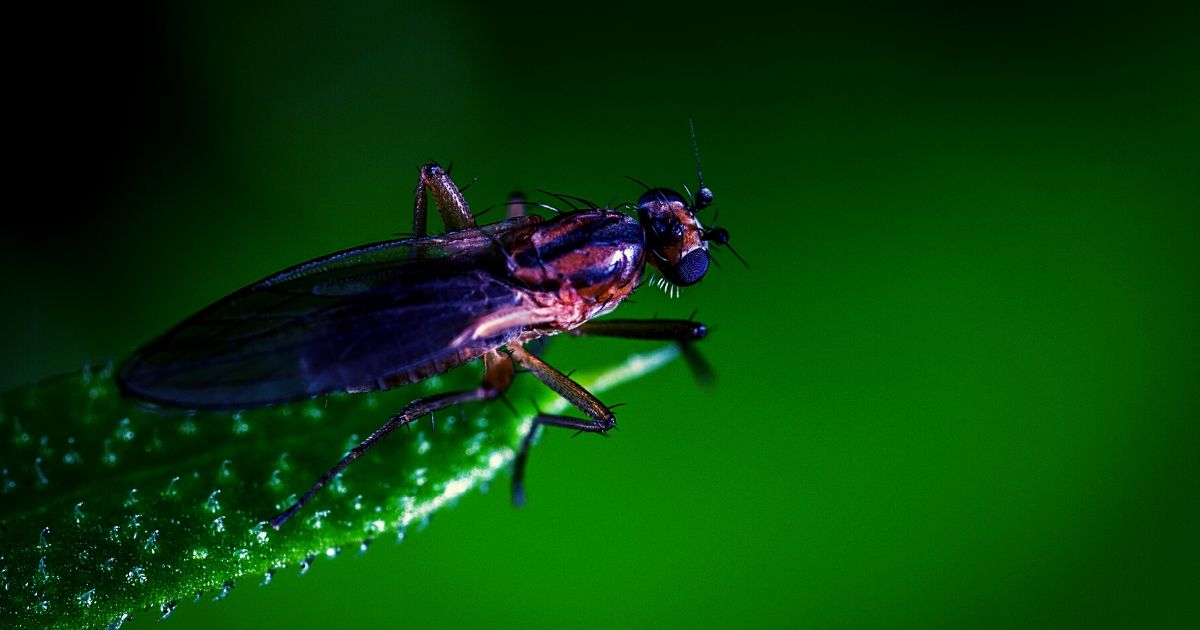
The pest control industry has seen many developments in eradicating pests that carry deadly diseases and preventing further infestations.
In Singapore, maintaining high standards of sanitation is important as this stops the spread of diseases and ensures that the health of its citizens is protected.
The Singapore government is also uncompromising when the people’s health and safety are in question, making sure to educate the public with steps on preventing pest infestations and enforcing rules and regulations on individuals and business entities.
The importance is not lost on the people living in Singapore but some may have taken extreme measures just to be sure. What follows is a series of events that have unfolded in the careers of Killem’s Pest Control Officers (PCOs) to be out of the ordinary, some even strange.
Encounter 1: The Bird that Wouldn’t Fly (Away)
In Singapore, common bird species such as the Sparrow and Mynah are less of a nuisance than rodents or cockroaches; nevertheless, they may still be a pest and nuisance as they can feed on human food and their droppings are toxic. They can be found near food and beverage (F&B) establishments, especially open-air restaurants and hawker centres. When they do cause a problem, however, it is best to call a professional.
One such call was attended by Killem and it was rightfully dealt with.
The pest in question was a sparrow that had made a well-known fast-food establishment it’s home for almost a year. Before Killem got involved, many methods were used to get the sparrow away from the premises. None of the methods proved to be successful. 50 glue boards and bird repellent had been placed by the previous pest control company, in the hopes of capturing the sparrow, but to no avail.
Killem’s PCOs had accessed the situation quickly and structured a solution based on previous experiences. Target pest-specific pesticides were placed to capture the sparrow alive. In less than a month, the sparrow had been caught alive and the establishment was free of potential hazards brought about by the sparrow. What still remains a question though is how the sparrow had escaped the countless glue boards with baits and the other PCOs for a year.
Encounter 2: Unsettled Settlers| Pest Paranoia | Pest Phobia| Entomophobia: The Fear of Insects | Fear of Pests: On a Subconscious Level
Not everyone is fond of insects and other creatures that are considered pests. In extreme cases, where people develop a fear of these pests or even subconsciously have an aversion to them, many avoid leaving their house or even believe that they constantly have pests crawling on them. Refer to our previous blog post on Entomophobia and Bed Bugs PTSD for more information on such conditions.
Understanding the needs and dilemmas of a client is as or even more important than the solution itself.
Pro Fact: Pests are dealt with by using equipment and pesticides based on past experience and knowledge of pest control professionals.
Clients, however, are a completely different case and one such client had given the PCOs at Killem a unique experience as well.
An eye-opening experience was when one of Killem’s PCOs attended to a pest control service call engaged by an expatriate from South America who had just moved to Singapore. She had mentioned during her initial call to Killem that in her new home, she had already seen many cockroaches running around the house. When the PCOs arrived at the site, they were greeted at the premises with one dead American cockroach.
Upon further investigation, they were unable to find any other cockroaches but carried out a precautionary treatment.
The client later mentioned that though the PCO was unable to find more cockroaches, she constantly felt as though giant cockroaches were chasing her with the intention of eating her alive. The client painted a very vivid picture to the PCO, one they claim they are still unable to forget.
Our client’s well being is of utmost concern so our PCO reassured the client that there were no other cockroaches to be found and she could safely set aside her fears. They also made sure to ask if she knew someone in Singapore so that she had someone to talk to and if she had any further pest concerns, Killem would always try it is best to address and deal with them.
Pest infestations have been known to cause mental health issues, from paranoia to depression. It is best to treat such cases with as much importance as with a case of actual pest infestation.
Want to find out more about pest management programs in Singapore?

Encounter 3: The Bed Bugs that Didn’t Bite
Most people know that bed bugs are notorious in causing very itchy bites. They prey on human blood and leave red bite marks on those sleeping on infested mattresses. For bed bugs to survive and reach maturity, they require a blood source. For more information on bed bugs, check out our bed bugs page and previous blog interviewing Dr How Yee Fatt who provided us with insights on bed bugs. So is it possible for someone to sleep on an infested bed and not get bitten?
The PCOs at Killem once came across a client who claimed that he was never once bitten by the bed bugs that infested his mattress. After taking one look at the said mattress, the PCOs thought otherwise.
Killem were tasked to perform general pest control services and inspection of a dormitory unit for foreign workers.
The unit housed a few hundred people of different nationalities living under one roof, each with their own bed. Upon inspection of one of the beds, a PCO had found, what he believed were more than a hundred bed bugs all over the mattress. The person sleeping on the mattress was surprisingly also shocked at the revelation. The PCO began to question the person who slept on the bed, asking how he was able to sleep without being interrupted with bites or itches. The person simply replied that he was never once bitten by the bed bugs.
This brought about some discussions among the roommates and our PCOs as to how someone can be unbitten and oblivious to bed bugs of that quantity. After further research undertaken by Killem, it turns out that it is possible that someone shows no signs of bed bug bites. If the person bitten has no allergic reaction, it is still extremely unlikely that someone sharing a mattress with 100 other bed bugs is not bitten at all.
Strange as it may seem or sound, pest problems should not be underestimated or mistaken to be a minor issue. They are best solved in the form of prevention methods even before they take form to be much more serious. At Killem, we take our PCOs, clients and what they have to say, seriously, even if they sound rather peculiar.

Pest Problem? Let Us Help.
We offer fast and effective precision treatments to eliminate pests while ensuring a safe environment for your home or business.
Related Posts
Industry Inside: Pest Control in Condominiums
General

Many condominiums in Singapore have full facilities, which means there are many different places for pests to roost such as swimming pools, BBQ pits and function rooms.
Why Condos Need Pest Control?
Pest control in condominiums is essential to ensure a clean, healthy, and comfortable living environment for residents. Here are some reasons why is it important to implement pest control measures in condominiums:
- Condos have shared spaces, i.e. walls, floors, and ceilings, so an infestation in one unit can quickly spread to others, making proactive pest control crucial to prevent widespread issues.
- Dense living conditions in condominiums can lead to increased waste generation, which attracts more pests like rodents, insects, and bedbugs.
- Food sources in kitchens and dining areas can also attracts more pests.
- Hidden, crawl spaces, and common areas that pests can use as breeding sites and hiding spots.
- Pests like termites and carpenter ants can damage the structural integrity of the building over time. Routine pest control in condominiums helps prevent costly structural repairs.
- Pest infestations can negatively impact the resale value and reputation of a condo complex.
- Condos may be subject to local regulations and health codes that require effective pest control measures to ensure a safe living environment.
- Diseases can spread from a pest infestation, and proper pest control safeguards the well-being of condo occupants.
Pro Tip: To prevent infestations in condos, it's essential to establish proactive pest control measures and conduct regular inspections.
How Infestations in Condos Arise?
Infestations in condos can arise due to a combination of factors unique to shared living environments. Shared spaces and walls make it easy for pests to move between units. Neglected condo maintenance, sanitation issues, and improper food/waste management create attractive environments for pest infestation. Pests can also spread from neighboring units, common areas, or due to structural vulnerabilities.
Swimming Pools
Swimming pools are attractive to pests because of the water and possible fungal growth. Midges are a common threat.
A small bug that resembles a mosquito, midges lay their eggs in the water and live for a period of time in their aquatic habitat.
They often emerge in large swarms, and can be hard to detect until they start to fly. Chemicals should not be used to remove them as they are also poisonous to the people who would swim in the pool.
Instead, condominiums should practice proper pool maintenance. A pool skimmer should be used to clean the top and remove any bugs or larvae. Chlorine should be added on a balanced schedule, and filters should be activated and cleaned regularly.
Gyms and BBQ Pits
Other parts in the condominiums where pests can manifest are the gym and BBQ pits.
Gyms, already ripe with bacteria and damp from sweat, have lots of hiding places for pests, especially in locker rooms and under mats. BBQ pits, where people make food and eat, can attract pests as well.
As with most places, proper sanitation and hygiene are crucial for keeping bugs and animals out. Residents should clean up any wrappers, crumbs, and leftovers they might have with them. Food should not be brought into the gymnasiums, and workers should clean the floors each night. Residents should keep their lockers clean.
If ants are a problem, the employees should spray ant hills and dispose of the chemicals properly. However, if there is an infestation, it is recommended that professional pest control providers such as Killem pest should be called to prevent further infestation.
Want to find out more about condo pest management in Singapore?

Function Rooms
As with gyms and BBQ pits, the same rules to Function Rooms. Residents and employees should make sure any food is covered and properly stored or disposed so pests are not attracted to it. Crevices and entryways into buildings should be properly sealed and sprayed if pests continue to find their way in.
Residents, when going in public areas, should make sure their bags are clean and check for bugs if returning from a garden, long-grassed area, or woods. As with other places, if there are pipes through which water is transported, they should be checked for leaks and repaired as soon as possible.
Finally, the owners of the condominium should make sure these public areas are cleaned frequently by experienced staff who will scrub the rooms.
Condominiums are one of the most likely places to become infested because they are so populated. When people come into contact frequently, it is easier to spread communal pests. Disease spreads quickly, meaning pests should be removed as fast as possible. Due to the size of the buildings, there are lots of locations for them to live.
Pest control providers such as Killem Pest should be engaged at least on a monthly basis to ensure that condominiums are kept pest free. For more information on how we can help visit our residential pest control page.
Preventing Infestations: Tips for Condo Tenants
Condo tenants can take several proactive steps to avoid infestations and maintain a pest-free living environment:
- Regularly clean living spaces, wipe down surfaces, and promptly dispose of food scraps and waste.
- Store food in airtight containers and keep countertops clean to eliminate food sources that attract pests.
- Properly seal and dispose of trash in designated bins, keeping them clean and free of leaks.
- Minimize clutter, as piles of items create hiding spots for pests.
- Seal gaps, cracks, and openings around doors, windows, and pipes to prevent pests from entering.
- Notify property management about any maintenance or pest concerns promptly.
- Thoroughly inspect secondhand furniture, clothing, or items before bringing them into the condo.
- Regularly clean and unclog drains to prevent stagnant water that can attract pests.
- Keep outdoor areas tidy to discourage pests from breeding nearby.

Pest Problem? Let Us Help.
We offer fast and effective precision treatments to eliminate pests while ensuring a safe environment for your home or business.
Frequently Asked Question
Cockroaches, rodents, midges, ants, termites, spiders and bed bugs are among the common condo pests. Depending on the season you can also face wasps, hornets, ladybugs or fruit flies in your condos.
Pests can enter the condo from nearby properties, through the garbage, with deliveries, through pipes and gaps in the building, or with the belongings of people living in the building.
To prevent pest infestation, maintain cleanliness in your apartment, regularly dispose of the trash, check your apartment for cracks, gaps, and other possible ways for pests to enter your home, and clear the clutter around your home.
Related Posts
The Best Insect Museums in the World
General
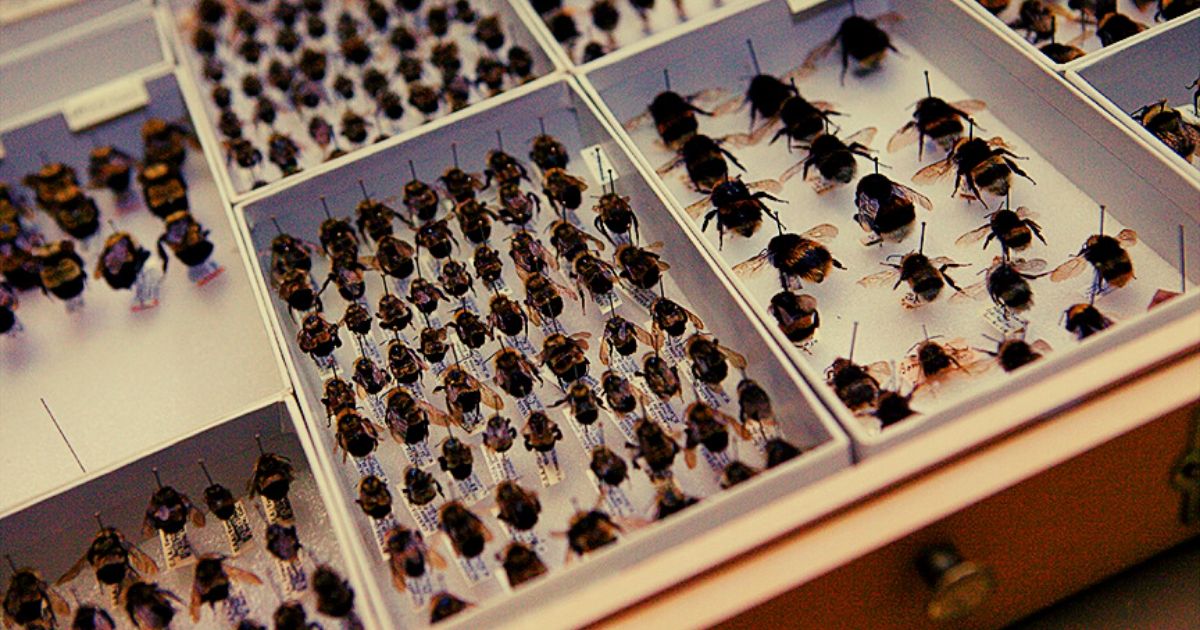
Many people around the world are disgusted and repulsed by insects, but many others find them fascinating. Scientists and philanthropists established museums in different nations so people can learn about and understand them without having to interact with live specimens.
Perhaps the most notable feature of each organization is their continued emphasis on education and research to continue to enhance the world’s understanding of insects, which outnumber humans 200,000,000 to 1.
Nawa Insect Museum
Yasushi Nawa established the Nawa Insect Research Center in 1896, and the organization eventually developed the Nawa Insect Museum so the general public could enjoy their collection. It is located in Gifu, Japan and features an extensive collection of over 300,000 specimens from 12,000 different species.
Each exhibit of insects is organized by species and contains specimens from South America, Southeast Asia, Africa, and the Middle East.
Each owner of the Insect Museum has been a member of the Nawa family, and continues to expand the collection using specimens from primarily hot climates.
The majority of the insects are beetles and butterflies, with additional exhibits featuring termites, moths, hornets, dragonflies, and several arachnids.
Image source: http://www.japanvisitor.com/japan-museums/nawa-insect
Richard M. Bohart Museum of Entomology
The Bohart Museum of Entomology is one of the largest insect collections in the United States and is located on the campus of the University of California in Davis. There are more than seven million specimens in the museum’s collection, and it is used as a public attraction and center for undergraduate and graduate research.
Their specimens come from all over the world, and some of the most important collections available for viewing include: the world’s largest collection of tardigrade water bears; the Ferris-McKenzie scale insect collection; and the H. Tyler swallowtail butterflies. The museum curates travelling exhibits and also features children’s educational programs.
Image source: http://bohart.ucdavis.edu/news-and-events.html
Insect Science Museum
The Insect Science Museum of the Zhongzheng District in Taipei, Taiwan is perhaps the only comprehensive insect collection to be located at a high school. It was constructed in 1968 and opened to the public in 1971. Like many other museums, education was a priority of its development and it continues to perform numerous services for the community.
Teachers visit the Insect Science Museum to learn how to teach their students about insects and introduce the subject of entomology. It also shows the public many slides and educational films to teach their audiences about special insects and their crucial function in various ecosystems.
Finally, the museum sponsors competitions and academic research related to the insects, and continues to be a powerful feature in the academic community of Taiwan and the larger entomologic field.
Killem Pest Interview with Leading Entomologist Dr How Yee Fatt

Lyman Entomological Museum
The Lyman Entomological Museum houses a collection of over 2.8 million insects and arthropods subdivided into multiple groups based on type.
It is a natural history museum in Saint-Anne-de-Bellevue in Quebec.
It is part of McGill University and is the largest university collection in Canada. Because Henry Lyman, the founder of the museum, was an avid lepidopterist, the museum hosts a fantastic butterfly collection with many exotic types.
It also possesses over 250,000 specimens of beetle with a large collection of West African scarabs and other species. The general public can visit the museum, and it also fosters intense academic study due to being attached to a college.
Natural History Museum
A visit to the Natural History Museum in London is highly recommended. The museum has more than 34 million insects, one the largest insect collections in the world. The Natural History Museum includes the following insects:
- Bees
- Beetles
- Butterflies
Smithsonian National Museum of Natural History
The Smithsonian National Museum of Natural History in Washington D.C. has a huge collection of insects. Visitors can interact with live butterflies and visit the so-called Insect Zoo.
Interesting fact: Insects outnumber humans 200,000,000 to 1.
Naturhistorisches Museum Wien
One of Europe’s best museums for insect is the Naturhistorisches Museum Wien, located in Vienna, Austria. The museum has a large collection of insects, including:
- Beetles
- Butterflies
- Moths
Museo del Instituto de Biología de la UNAM
The Museo del Instituto de Biología de la UNAM in Mexico City showcases a large collection of insects that are present in Mexico and other parts of the world, and includes:
- Beetles
- Butterflies
- Moths
Museum of Natural History
Paris cannot be excluded from this list. Its Museum of Natural History is a must-visit for entomologists and insect enthusiasts. There are a wide variety of rare insect species found in the museum.

Pest Problem? Let Us Help.
We offer fast and effective precision treatments to eliminate pests while ensuring a safe environment for your home or business.
Frequently Asked Questions
A bug museum or exhibit of live insects is often called an insectarium. They display a variety of insects and bugs, like spiders, ants, cockroaches, millipedes and centipedes, and others.
The Montreal Insectarium is the largest insect museum in North America and one of the largest insect museums worldwide – currently, visitors can see more than 3,000 species of insects.
Related Posts
What is Entomophobia?
General
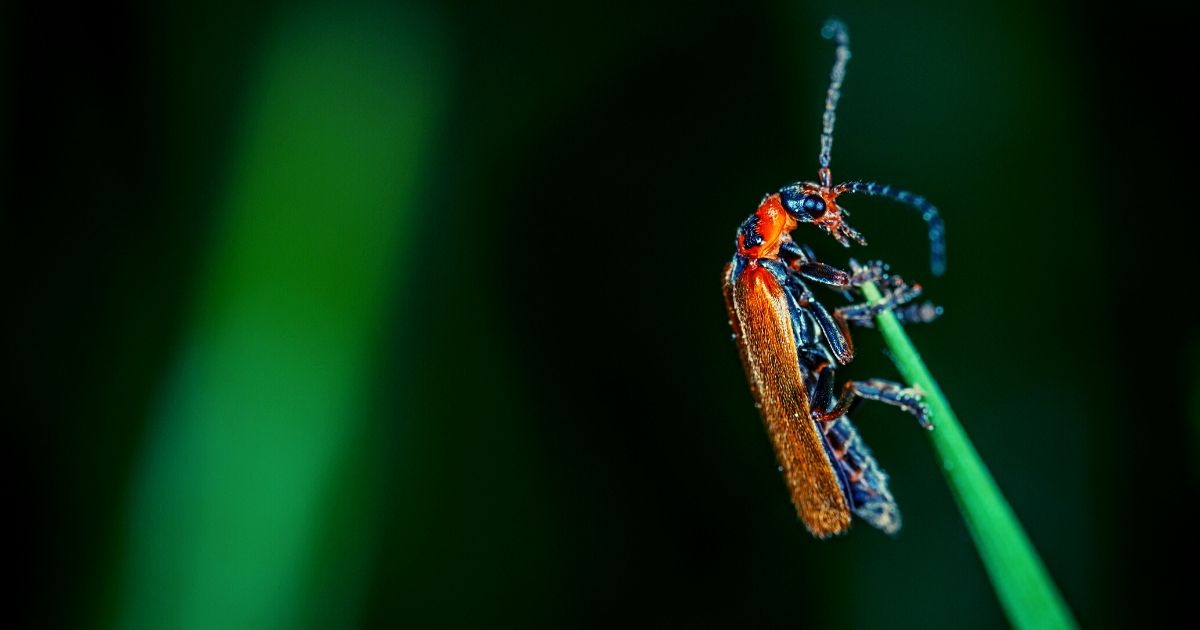
In our previous Interview with Leading Entomologist Dr How, Dr How gave us an introduction to the term ‘entomology’. To recap, entomology is the study of insects, though some people use it to colloquially refer to bugs of all kinds, including spiders. People who study insects are called entomologists. The word is based on Greek, where “entomon” means “insect” and “logia” means “the study of.”
It is an interesting field that often intersects with other academic disciplines, including genetics, physiology, biology, and chemistry.
At present, there are more than 1.3 million species of insect in the world, which make up 2/3 of the planet’s entire population. Thanks to entomologists, humans understand many things about a type of creature which outnumbers them by a factor of several hundred.
What is Entomophobia?
While entomologists enjoy studying insects, many other people are repulsed by them. Worse still, there are some people in the world who suffer from entomophobia, or the intense fear of insects.
People with entomophobia have:
- An irrational fear of insects and will often take great pains to avoid them.
- Many sufferers will experience horrific anxiety and terror simply from seeing an insect or thinking about one.
- It can also be subdivided into additional phobias like myrmecophobia (the fear of ants) and apiphobia (the fear of bees).
It is important to distinguish entomophobia from a general fear of bugs.
Many people with entomophobia know that insects pose no real threat to them, but they still experience a persistent sense of anxiety around them.
There have been many cases of a sufferer thinking about an imaginary insect and being thrown into a panic attack. Often, sufferers will go out of their way to avoid encountering an insect: some will completely change their route to work if they see an ant, or will refuse to go outside at all.
Ultimately, the main characteristic of entomophobia is that the fear must be constant, irrational, and debilitating for the sufferer.
What Causes Entomophobia?
There are several possible causes of entomophobia. One of the most commonly heard causes is people’s past experiences with insects. Let’s say you encountered a cockroach or a rodent years ago, and it freaked you out. This may leave a deep imprint in your mind. Some may even call it a traumatizing experience.
Another cause could be a direct health threat from insects. An allergic reaction to a bee sting can cause entomophobia.
People around us have a big influence on how we think and look at the world. If any of your close relatives suffer from anxiety or phobia, it can increase your risk of entomophobia. Another way is when you hear friends or family talking about their fear of insects.

How is Entomophobia Treated?
Thankfully, modern medicine and psychology have developed coping strategies for people who have entomophobia. One of the most common methods is systematic desensitization, where somebody slowly exposes themselves to their fear.
Some examples would be a person who looks at a photo of an insect one week. Next week, they work up the courage to touch the picture. A week later, they visit a zoo and watch the insect move around. Possibly the week after that, they could touch the insect and see it means them no harm.
Pro Tip: It is recommended that a person receive help from a therapist so they do not try to do too much DIY methods at once.
Another, less common, method that can be used is hypnosis. During hypnosis, a person is placed into a trancelike state by a trained professional. The hypnotist then talks to the patient to determine the source of their fear, and can begin to help them cope.
Often a hypnotist will start small by suggesting to their patient that they do not have a reason to be afraid of insects. They can then implant the thought that when the patient awakens, they will no longer have entomophobia. They will face their fears head on and will no longer be afraid. For this method to work, a person needs to believe in hypnosis, and it often takes many sessions.
Either way, patients can use both methods to help them overcome entomophobia, a real condition which can cause unnecessary strain on its sufferers.
The Cleveland Clinic mentions several techniques that may help treat and overcome entomophobia, including:
- Cognitive Behavioral Therapy (CBT)
- Hypnotherapy
- Antidepressants and other medications
- Relaxing practices such as yoga and meditation

Pest Problem? Let Us Help.
We offer fast and effective precision treatments to eliminate pests while ensuring a safe environment for your home or business.
Frequently Asked Questions
Yes, entomophobia and insectophobia both mean the fear of insects. People with this phobia feel anxious when they see or think about insects.
Entomophobia is considered a relatively common fear around the world. For example, it is estimated that around 6% of adults and 10% of children in the US struggle with entomophobia.
If you feel anxious or experience physical symptoms like itching and crawling sensation under your skin when thinking about insects, and/or you avoid getting in contact with insects, you might have entomophobia.
Entomophobia can significantly impair a person’s quality of life. Common complications associated with entomophobia include anxiety and panic attacks, avoidance behaviors that can also lead to social isolation, secondary phobias, such as agoraphobia (fear of open spaces) or acrophobia (fear of heights), sleep disturbances, and even physical health issues.



